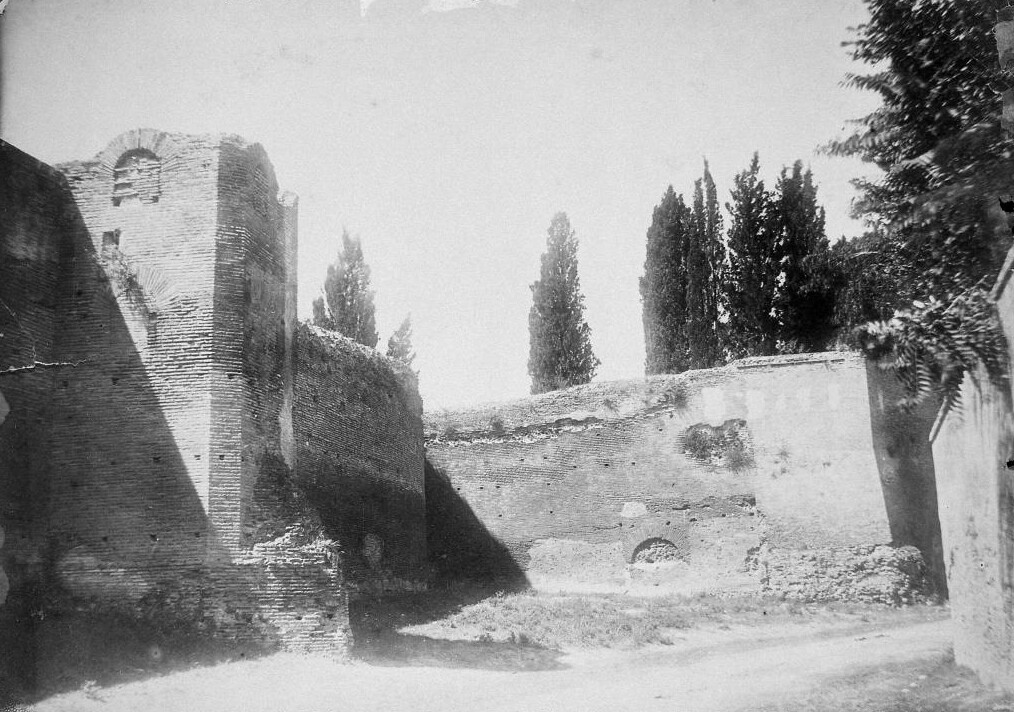One of the rounded corners of the enclosure of the Castro Pretorio, the encampment built by Tiberius to quarter the cohorts of Praetorians who until then had been stationed in different areas of the city, can be seen in this spot. The construction of Castro Pretorio, with the typical orthogonal scheme of military camps, dates back to between 20 and 23 AD; the camp had a rectangular shape with an uneven southern side and covered an area of 16 hectares, to the right and left of today’s Viale Castro Pretorio, including the areas of the barracks of the same name and the National Library. It is estimated that the camp could accommodate up to 15,000 soldiers. It was the first large Roman opus latericium or brickwork factory, built in an area that was outside the built-up area at that time.
The Castro Pretorio continued to function as a military camp until 312 AD, when Emperor Constantine decreed the disbandment of the Praetorian Corps, which had fought alongside his rival Maxentius in the decisive battle of Ponte Milvio.



